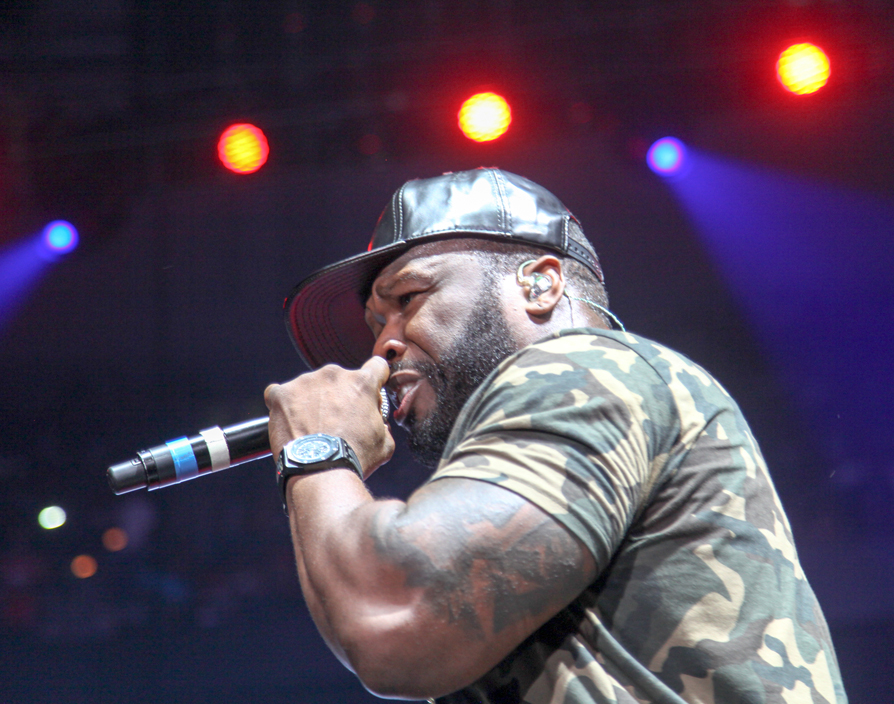Photo credit: Jamie Lamor Thompson/Shutterstock.com
Influencers have become a powerful tool in companies’ marketing arsenal. While endorsements have been popular since before Frank Sinatra brought up his first glass of Jack Daniels on stage, the impact of influencers has skyrocketed thanks to the immediacy of modern social media. Today, brands are no strangers to seeking out celebrities like Kim Kardashian West and vloggers like Zoella to raise awareness about their products. So what happens when influencers misbehave or suddenly up and leave?
That’s the question marketing experts, social media platforms and entrepreneurs were left asking themselves after 50 Cent abruptly announced that he was leaving Instagram on Wednesday May 10.
Announcing his departure, the rapper known as Curtis James Jackson III to his family left the platform after accusing the Facebook-owned company of having deleted his posts without alerting him. He wrote: “I’m leaving IG, I’m going back to Twitter. They take shit down off my page [without] notifying me. #censorthesenuts.”
Although, it may not be that surprising that the post in question was removed. After all, HotNewHipHop has reported that the post included a screenshot of the leaked sex tape of rapper-turned-reality-star Teairra Marí. In the post, 50 Cent allegedly wrote: “Damn baby, this reality TV shit going so far, what you doing this for?”
Not only is posting revenge porn ethically questionable but it also violates Instagram’s terms of use. In fact, the platform’s second rule reads: “You may not post violent, nude, partially nude, discriminatory, unlawful, infringing, hateful, pornographic or sexually suggestive photos or other content via the service.”
But despite clearly violating Instagram’s rules, the Candy Shop singer left the platform in a huff and puff last week.
So what does it mean for Instagram that 50 Cent is no longer ‘in da club’? “It is a loss for any social platform when they lose a big influencer,” says Tom Bourlet, marketing manager for The Stag Company, the event organiser. “However, Instagram [is] hardly short on influencers and people won’t stop using the platform based on this loss. 50 Cent did have a strong following of [18 million] users, therefore the only threat would be if people switched to Twitter to continue reading his posts where he already has ten million followers.”
James Street, co-founder of Whalar, the influencer marketing platform, added that while celebrities are a big draw, the medium allows for less well-known people – so-called micro-influencers – to shine too. “People are celebrated for the creativity they bring to the table not for who they are,” he says. “Sure, they could be a celebrity like 50 Cent with 18 million followers but equally they might be a regular person with an eye for the visual and what makes a brilliant Insta post with 500,000 followers. The best thing about Instagram isn’t the famous faces that utilise it but the regular people that use the medium to add value through their creativity. When a brand comes to us with a brief for an influencer campaign, it’s extremely rare that celebrities will be on their radar.”
Additionally, even though the return of 50 Cent to Twitter may initially look like good news for the platform, at closer inspection the turn of events may not be that stellar. “Twitter has a bad reputation for poorly handling censorship,” said Bourlet. “In fact, you will quite easily see explicit photos, even within sponsored tweets, something which would be difficult to get through the Facebook system.”
This apparent leniency has also manifested in other ways. For instance, it has enabled hate speech and fake news to propagate beyond control on the platform. That being said, both Twitter and Facebook have taken steps over the past year to clean up their services. A clear sign of this happened in March when both of them banned the racist hate group Britain First from their platforms.
Looking at what startups can learn from the story, Bryony Thomas, the author of Watertight Marketing and founder of the marketing agency with the same name, said: “The lesson for brand builders is to understand the terms of the platforms you’re using. The other lesson here is not to become reliant on one channel to market. If someone else has the power to switch you off, you need to spread the risk.“
Moving forward, Street encourages entrepreneurs to carefully select the influencers they work with. “Don’t just look at the number of followers an influencer has, look at their values and whether they align to those of your brand,” he says. “It’s not enough now to put any kind of comment, campaign or creativity out there and expect it just to exist, once it’s unleashed it takes on a life of its own and you have to be ready for the feedback and willing and able to engage.”
Personally, we find it slightly ironic that the singer who wrote Wanksta is acting less than a gangster and a more of a… well, you know what we’re getting at. ![]()
Share via:









































